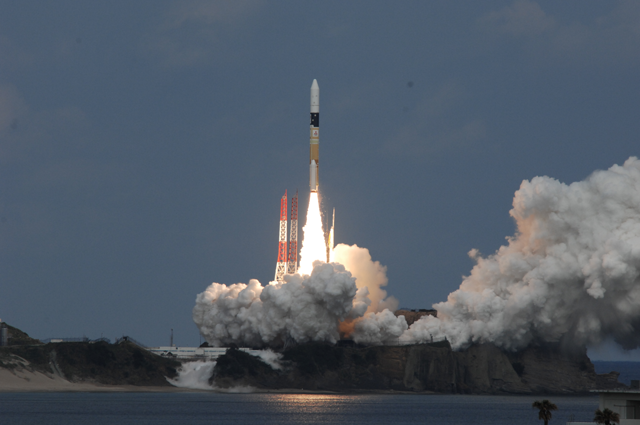European and Russian companies may have a stratospheric lead in the commercial satellite business, but that’s not stopping Tokyo from reaching for the stars.
Channel News Asia reports that Japan launched its first commercial satellite on November 24.
The article added that the liftoff occurred at Tanegashima Space Center in southwest Japan, and was overseen by the Japan Aerospace Exploration Agency and Mitsubishi Heavy Industries. Dubbed TELSTAR 12V, the satellite will broadcast for Canadian satellite operator Telesat.
This apparently won’t be Japan’s sole orbital foray, and many insiders insist that the nation is vying to become a major contender in the satellite launching business. Reports note that this first launch has gone through a stringent efficiency process to make it, and future launches, as economical and competitive as possible. However, the launch didn’t go off without a hitch – its rocket’s takeoff was delayed for half an hour, from 15:23 to 15:50, as a small ship accidentally drifted into proximity.
After that minor hiccup, the rocket blasted upward and roared toward the heavens. All in all, it was a successful mission for Japan’s first commercial satellite. The liftoff also marks Japan’s latest move in its unofficial space race with longtime rival China. The Japan Aerospace Exploration Agency (JAXA) has suggested it will make an unmanned mission to the moon by 2018 or 2019, according to Newsmax. This would be a vast improvement over the country’s botched mission to Mars in 1998, which in essence derailed the entire space program since then, preventing Japan from keeping step with China, who has successfully launched its astronauts into orbit in the interim.
Japan’s other space rival may very well be India. In August, the South Asian nation announced successful back-to-back launches of its own latest communication satellites. The error-free endeavors were especially appreciated by India’s space industry because a similar launch had fizzled in 2010.
–Kyle Mullin
Image: H-IIA launch vehicle no. 26 lifts from Tanegashima Space Center (via JAXA).
Updated On July 18, 2017








